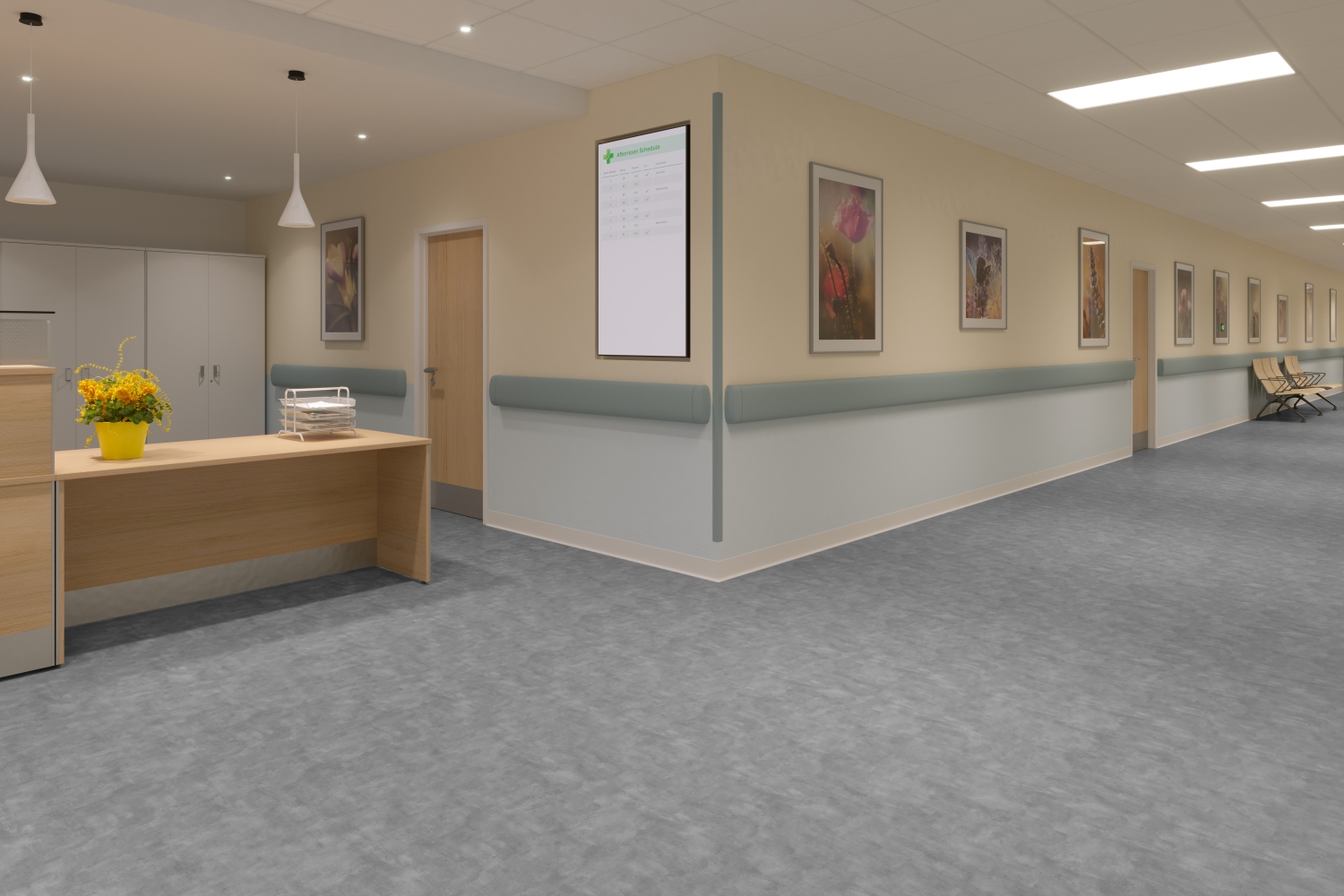
May, 2024
In healthcare settings, the choice of flooring is not merely a matter of aesthetics; it is a critical component that contributes significantly to hygiene, safety, and the overall healing environment. Given the stringent requirements of medical facilities, selecting the right flooring solution is paramount. Products like those offered by DURAFLOR are specifically designed to meet these unique demands, combining functionality with the need to support health and wellness.
Hygiene is the cornerstone of healthcare flooring considerations. In environments where the risk of infection must be minimised, flooring solutions must be easy to clean and maintain. Additionally, the non-porous surfaces of these vinyl products can actually prevent the accumulation of bacteria and viruses, an essential feature for medical settings.
Safety is another critical factor in healthcare flooring. The floor must provide a secure footing to prevent falls, which are a significant hazard in hospitals, particularly for elderly patients and those with mobility issues. DURAFLOR Duragrip offers enhanced slip resistance without being overly abrasive, ensuring that both patients and healthcare providers can move safely and comfortably across different areas. Check out our blog article on slip-resistance here.
Comfort and wellness are increasingly recognised as vital to the healing process, with the design elements of a healthcare facility influencing patient recovery. The aesthetic qualities of DURAFLOR’s Cienna Collection and Resolute ranges have led to these products being specified on healthcare facility projects in the past. This was mainly due to their performance and how their design contributed to creating a welcoming and calm atmosphere, essential for patient comfort.

Finally, the long-term durability and environmental impact of flooring materials are also key concerns. Healthcare facilities require floors that can withstand heavy use and last for years without needing frequent replacements, which can be disruptive and costly. DURAFLOR’s commitment to sustainability is evident in their use of recycled materials and production processes designed to minimise environmental impact, aligning with the healthcare sector’s growing emphasis on sustainability.
For more details on the obligations on contractors and designers we suggest review documents like this:
Health Building Note 00-10: Design for flooring, walls, ceilings, sanitary ware and windows – This document offers comprehensive guidance on various aspects of healthcare facility design, including specific requirements for flooring to ensure safety, hygiene, and durability in such settings. This guidance is crucial for understanding the standards that need to be met in healthcare environments (NHS England).
In Scotland, healthcare facility design standards and guidelines are set forth in various Scottish Health Facilities Notes (SHFNs) and Scottish Health Technical Memorandums (SHTMs). For instance, the SHTM 61 provides detailed guidelines on flooring requirements, emphasising slip resistance, hygiene, and the use of suitable materials to prevent infection (ReadKong).
Flooring in healthcare environments requires a careful balance of hygienic properties, safety features, comfort, acoustic control, and sustainability. DURAFLOR’s range of floor covering solutions meets these multifaceted demands, offering durable, safe, and aesthetically pleasing solutions that contribute positively to the therapeutic ambiance of medical facilities. For flooring contractors, understanding and leveraging these characteristics can significantly enhance their offerings in the healthcare sector, ensuring installations that uphold the highest standards of medical care and patient comfort.